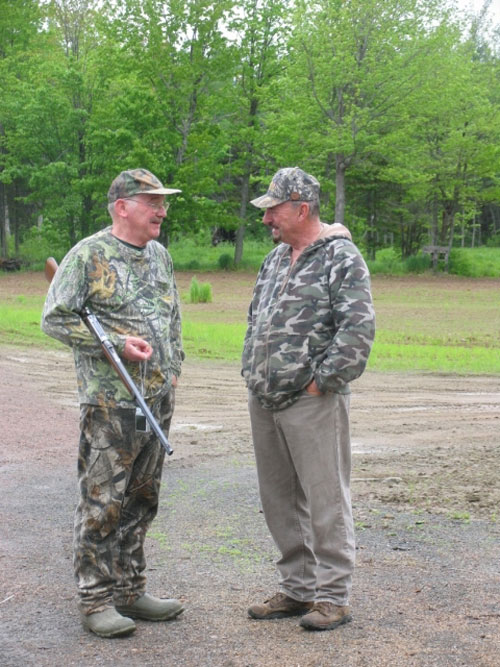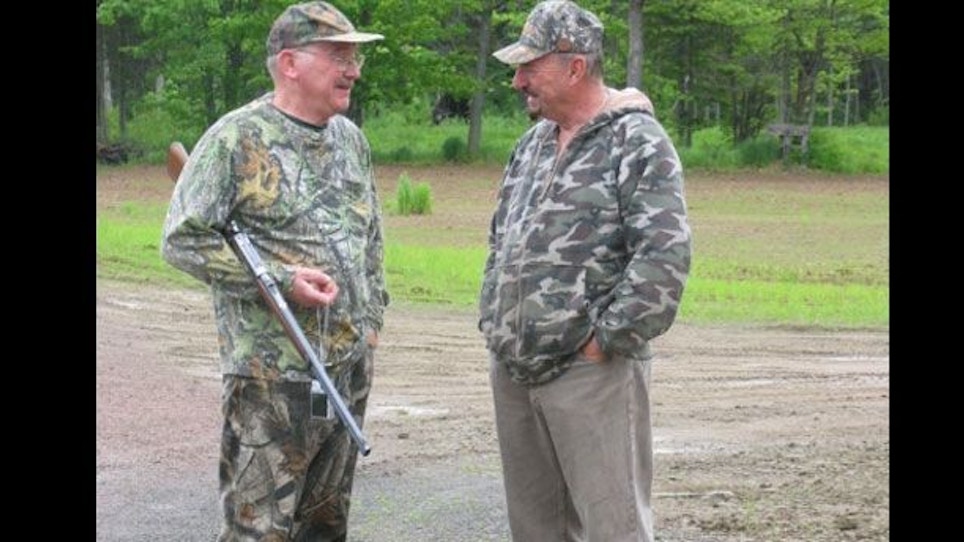 Wouldn’t it be great to have exclusive access to thousands of acres of well-managed, high-fence farm country where record-book whitetails abound, a place where only a select few of your wealthiest friends are allowed to hunt? That’s the deer hunter’s ultimate dream, but the odds are that you (and I) are among the majority of hunters whose deer hunting takes place on public land or local farms where gracious landowners still allow unlimited access. That is how deer hunting used to be and still is for many hunters with thin wallets and limited time to spend afield.
Wouldn’t it be great to have exclusive access to thousands of acres of well-managed, high-fence farm country where record-book whitetails abound, a place where only a select few of your wealthiest friends are allowed to hunt? That’s the deer hunter’s ultimate dream, but the odds are that you (and I) are among the majority of hunters whose deer hunting takes place on public land or local farms where gracious landowners still allow unlimited access. That is how deer hunting used to be and still is for many hunters with thin wallets and limited time to spend afield.
One possibility is the large, members-only club where as many as 100 hunters contribute their time and money to a long-term lease on a major property with annual dues of several thousand dollars. These leases often require mandatory attendance at clean-up days, work days and voting days where members decide what the rules are going to be and who is going to be allowed into the club. Some of these large leases allow hunting and fishing rights year-round under specific rules established by the club, and such things as camp sites, stand placement and guest options are decided by the membership.
There is another option, however — a compromise that gives us little guys a chance to create better hunting opportunities without investing every penny we have or having to share the best spots with dozens of other hunters. The solution: Small plot leasing. Think of it as a high-fence operation without the fence and on a much smaller scale.
It’s a safe bet that any hunter of experience knows of at least one small farm (or former farm) that presently offers decent hunting but could produce even better results with a little habitat tweaking. There are thousands of small farms out there (1,000 acres or less — perhaps as little as 50 or even 25 acres) that could be turned into great deer-hunting areas in just a few years with a little bit of work and a small cash investment.
Keep in mind while conducting your search that you don’t need hundreds or thousands of acres to create a productive lease. Look beyond the boundaries of your prospective lease to see what benefits adjoining properties can bring. One place I hunt in Ohio, for example, is only 15 acres but is surrounded by farms and paper company land. Few deer actually live on this small parcel, but they are there every morning and evening to feed or while passing through from surrounding bedding and feeding areas. There are two corn feeders on the property that bring deer in from the surrounding area (legal in Ohio), and as the season wears on, all of the action takes place on this relatively small plot of land.
Finding The Land
Every worthwhile endeavor requires some effort, and small-farm leasing is no different. The first task, of course, is finding a suitable farm. Look for properties that were once thriving farms but through neglect, hard times or mismanagement have become overgrown. Odds are that there are already deer on these properties, but the landowner is not willing to invest the time and energy it takes to create better habitat. That is where you come in! If you’re willing to spend a few weekends each year cutting, trimming, plowing, fertilizing and planting, you can expect to begin enjoying the fruits of your labors within a couple of seasons — often less, in some cases. Just last year I planted turnips on September 1 and deer were coming to the two quarter-acre plots by October 1. They continued coming in through the end of the muzzleloader season in December — and our total investment was just $17 for seed and fertilizer.
See page 2 for more.
When you find a small place that could be improved with a minimum of work, approach the landowner with the idea of leasing his property exclusively to you and your small group of like-minded friends for the deer season. Make it clear that only your group will be allowed to hunt the place for deer, especially during October and November. This will cover the bow season and the rut, and should allow your group to hunt in peace over habitat you’ve improved. There’s no harm in allowing bird, duck, rabbit or squirrel hunting before and after the deer season, and doing so might give you added leverage when negotiating with the landowner.
Let the landowner know that you will want to create food plots, establish feeders and place trail cameras, tree stands and blinds (as the law allows) and that your group will be fully responsible for the work and expense of all these improvements. Ask if the landowner would be willing to contribute his equipment or expertise when it comes to planting, fertilizing and maintaining food plots. Come prepared with a liability statement that frees the landowner of any responsibility if any of the members fall out of a tree or otherwise get into trouble, and be prepared to purchase a liability insurance policy.
There are a number of additional points to discuss, including vehicle access and use on the property, off-limits areas (homes, barns, livestock pastures, etc.), handling of game, etc. Let the landowner know that you want exclusive hunting rights during peak periods in exchange for your habitat improvements and lease fees, but be willing to compromise in areas that are obviously deal breakers.
What To Pay
The costs of small-farm leasing are much lower than those of larger farms with more club members. Some leases are based on a per-acre fee, while others are based on an agreed-upon per-member charge. Truth be told, most farmers have no idea what to charge for a lease and will accept any reasonable amount — for the first year or two. As the agreement matures and the landowner learns more about leasing, changes might occur in the amount of acreage he makes available to the club, how many members the club can have and the amount of work he allows to be done. Competition from other clubs might even become a factor. Some leases are based purely on the amount of money it costs to make the necessary improvements, or the farmer might charge a set fee per year, leaving the other expenses up to the club membership. In the long run, you decide what the value of an exclusive deer lease is to you and your friends and divvy it up accordingly.
Don’t be afraid to walk away if a landowner becomes too greedy or demanding. On one prospective lease the farmer wanted $500 per year for spring turkey hunting — in a one-gobbler state, that’s a lot to pay for one turkey! Another prospect wanted to allow his friends, family and employees to hunt (for free) year-round without having to participate in clean-up days, work days or any other club projects. Keep looking and you’ll find a property you can afford with a landowner who’s willing to work with you.






